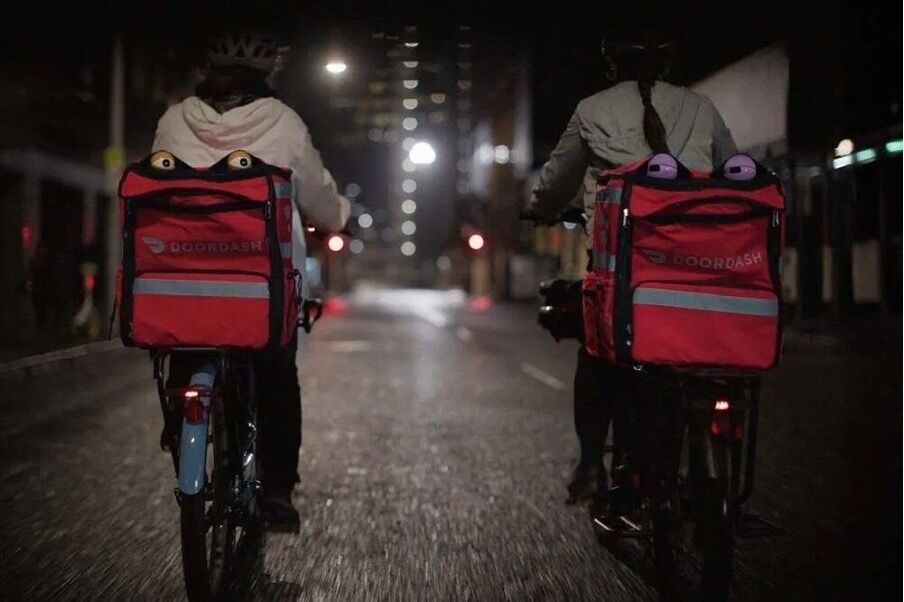In this week’s Our Take, a no‑follower flex reshapes online status, DoorDash builds a new kind of mascot, toddler skincare sparks debate, and Europe’s dating economy gets a reality check.
The No-Follower Flex

Once upon a time, social media status was simple: more followers, more clout. But somewhere between the bots, the algorithmic chaos, and an endless feed of brand deals, follower counts have lost their meaning. The new status symbol? Having none, or at least looking like you don’t care.
It’s a quiet rebellion against the performance trap of the digital world. When follower inflation is easy to fake and engagement tells the real story, a small (or private) account signals something rarer: taste, restraint, and real-world credibility. While influencers chase virality, the truly interesting people are posting sporadically, sharing blurry photos with only a few hundred followers – and they feel completely content with it.
Brands are finally catching on that authentic influence isn’t about scale, it’s about substance. They’re moving past the follower-count obsession, partnering instead with creators who have real authority. People who are masters of their craft, hyper-niche, and deeply trusted by their communities. Whether they have 2,000 or 20,000 followers, it’s the quality of their audience that counts.
As the internet grows louder and more monetised, cool is drifting offline. A messy, unpolished feed (or no feed at all) is the new power move. In a world obsessed with visibility, invisibility might just be the ultimate flex.
DoorDash Down Under

G’day indeed! DoorDash Australia has pulled off something surprisingly fresh in a market drowning in identical delivery app ads. Instead of chasing another celebrity cameo or TikTok-famous face, they’ve bet big on… two scrappy, handmade courier bags brought to life with in-camera puppetry.
These puppet bags look like they were stitched together in someone’s garage after a few Tooheys, but that’s precisely why they work. They feel local. They feel lived-in. They feel Aussie. Their banter is pure suburban gold, chatting about modern life, the weirdness of neighbours, and the state of the world, and it taps into the hyper-relatable, observational humour Aussies actually love.
This isn’t a throwaway stunt either. DoorDash is clearly trying to build something every brand wants but few actually commit to: long-term mascots with cultural stickiness. These oddball bags give DoorDash a personality advantage in a category where speed and price have become totally interchangeable. When the product is a commodity, the brand needs a soul, and mascots are back with a vengeance.
The bigger trend? We’re watching a shift away from glossy, influencer-first marketing and back toward distinctive, ownable brand characters – the kind that can grow, evolve, and become shorthand for a service.
Toddler Glow Up Incoming

Shay Mitchell just dropped a skincare line for toddlers, and no, that’s not a parody headline. Her daughter “wanted to do what mummy does,” which is sweet… until you realise it’s being bottled, branded, and sold.
Dermatologists are practically waving red flags. Kids don’t need serums, masks, moisturisers, or anything that comes in pastel packaging with a price tag. And parents? They’re side-eyeing the whole thing. Because let’s be honest: this feels a lot less like empowerment and a lot more like monetising mum guilt and nursery-safe aesthetics.
But Shay isn’t an outlier, she’s part of a wider creep of “kiddie skincare” that’s been bubbling up for years. Mini masks. Scented lotions. Routine charts for five-year-olds. And social media is jet-fuelling it, serving up content that basically says: if your toddler doesn’t have a skincare regime, you’re falling behind.
We’ve turned “self-care” into an identity marker so aggressively that it’s now trickling down to people who can’t even tie their own shoes. It’s wellness-as-performance, for people who still eat crayons.
The Cost of Love

Dating used to mean butterflies. Now it means budgeting apps. A new Deutsche Bank study has basically confirmed what every single person in Europe already knows: romance has become a luxury sport, and some cities are charging Champions League prices.
Switzerland leads the pack – Geneva and Zurich both cross the €390 mark for what counts as a “cheap” date. London isn’t far behind at €313. Meanwhile Istanbul, Prague, and Budapest offer dates closer to €160–€190, though local purchasing power complicates the picture.
The real cultural shift? The middle of the dating market is disappearing. Inflation has pushed romance into two camps: at-home dates or high-end splurges, with very little in between. TikTok is full of “first date under €20” content, and even long-term couples are swapping nights out for cheaper cosy-ins.
Love might be priceless, but dating has been fully priced up – and in many cities, it’s starting to look elite.